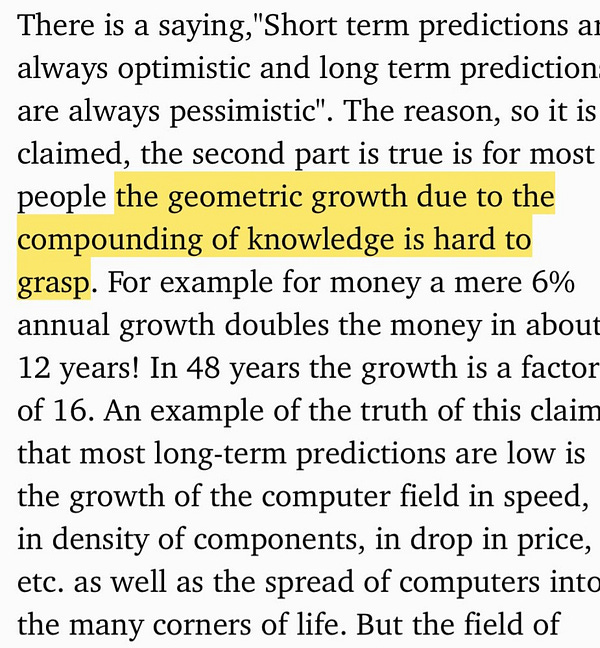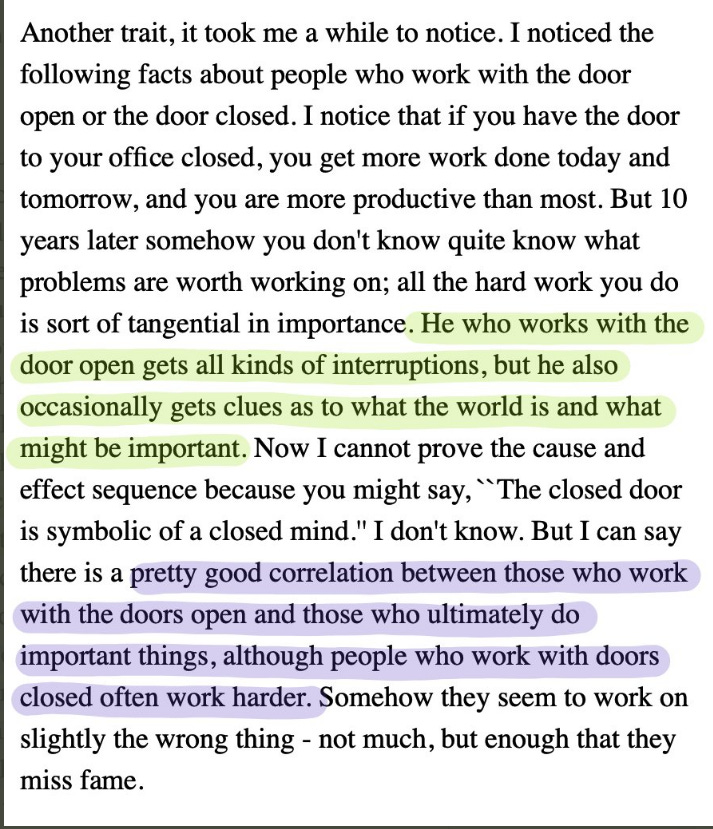Optimist's Mindset
Learn to learn in an investing and product management context.
Dr. Richard W Hamming (1915-1998) was one of the greatest applied mathematicians of the 20th century. I would recommend listening to his lectures which are full of wit, wisdom and of course loads of knowledge. “The Art of Doing Science and Engineering: Learning to Learn" was a capstone course by him delivered for graduate students at the Naval Postgraduate School (NPS) in Monterey California.
Most of his wisdom applies to a broader spectrum of life. However, let me try to be a man with hammer to whom everything is a nail! I understand as a great scientist he wasn’t thinking about investing or product management during these lectures or books. Let me try to apply these learnings or try to make some inferences on investing and product management.


Product Management : Keep asking the two Hamming Questions

Richard Hamming used to sit down with experts from other fields, cut the small talk , and ask two questions:
What’s the most important problem in your field?
Why aren’t you working on it?
One of the traits most PMs miss is the lack of High Agency mindset to make small shifts in thinking and identify the biggest problems to be solved. The art of confronting the facts without blaming, complaining etc is a hallmark of a great product manager! Dr Hamming's multidisciplinary approach can be very much practiced by product managers (say domain +tech+ UX etc)
Dr Hamming although suggested the below in a classical research context, as PMs one can try to build a collaborative, robust feedback and prioritization process with an open mind (which he refers as open door policy) No product can be future proof but a good build-measure-learn-repeat loop can be helpful.
Investing : Recognizing the power of Compounding :

We are typically more comfortable with linear thinking and need to understand that large scale transformations comes from exponential growth. That’s the power of compounding which we need to keep learning. Dr. Hamming articulated this through his geometric progression/growth examples from a knowledge managment perspective. As an investor one can easily correlate this in an investment process context as well! A goal-based approach may add an element of discipline as well. All these seem obvious but as humans we need constant reminders and reiterations!
Key take aways - Developing own “Style”
Dr. Hamming suggests to manufacture ones own “style” which is critical in terms of finding a balance between practicality and theory. One may read hundreds of books on investing and product management but still need to “internalize” own thought process and try to apply them in real life scenarios. Blinding aping an investment guru or a product leader might not take us too far! A collaborating approach with someone a step ahead of you in terms of latest insights and/or someone very experienced can also be handy!
Finally, as he advocates in his book, an optimal balance in terms of learnings from history and futuristic thinking is the key to achieve goals. Learn to learn.
"Assuming you rise to the top, please remember: what made you great may not be appropriate for the next generation." - Richard Hamming

